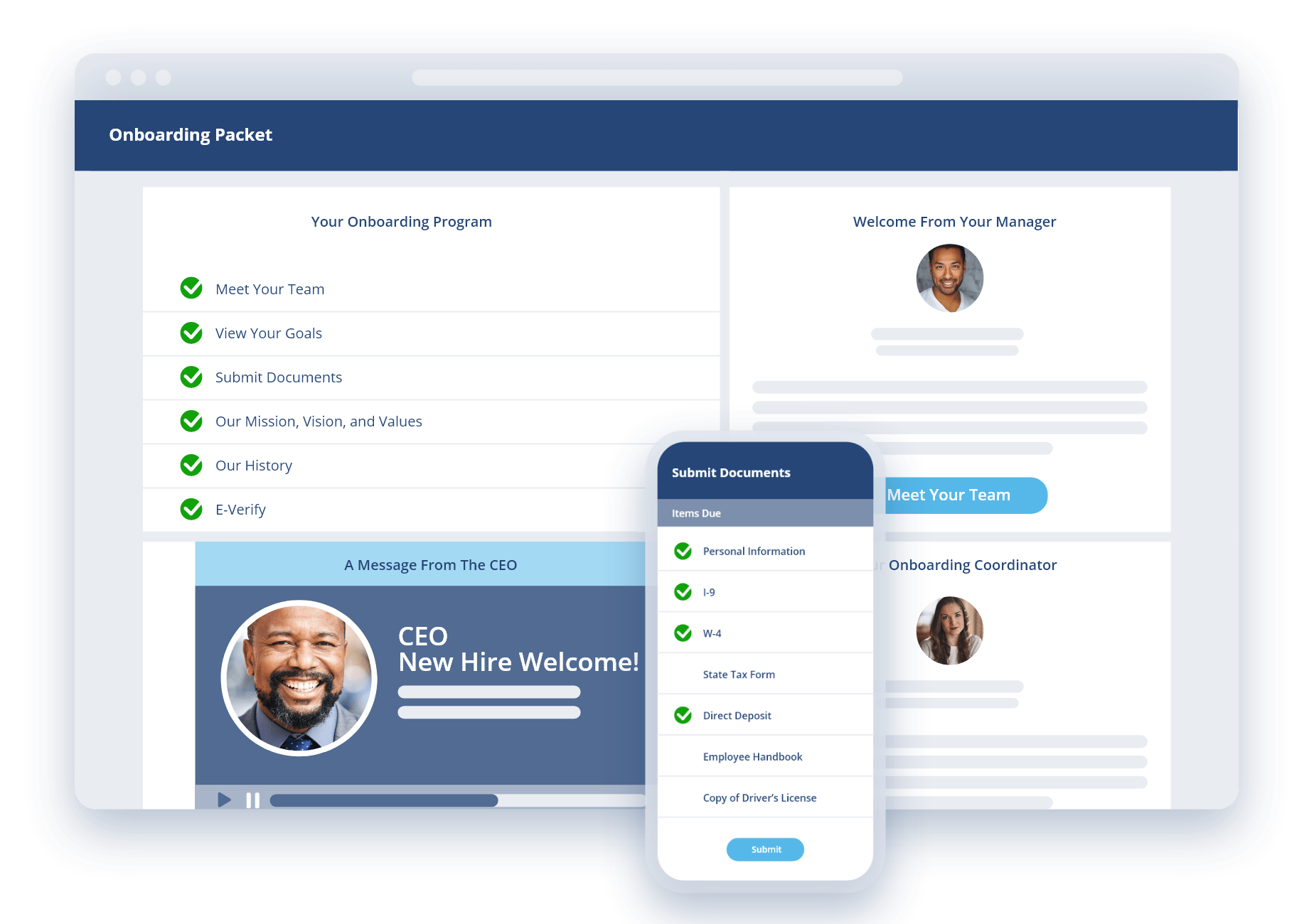Studies have shown that organizations with strong onboarding processes see retention rates increase by 82%, yet only 12% of employees believe their company does an adequate job of onboarding new hires. With companies at various stages in returning to work, recruiters need an adaptable onboarding process that fits all employees' needs. What works best for an in-person onboarding experience might not translate well for a remote experience.
4 Tips for Enhancing Your New Hire Onboarding Tools
Here are four tips for HR teams looking to modify their new hire onboarding tools and processes.
The average onboarding process includes 54 tasks. Find ways to #condense and #streamline the #NewHireOnboarding with these 4 tips from @ClearCompany1. Adapt What You Already Have
Living in an increasingly globalized world means that traditional onboarding processes can be impractical. While these face-to-face processes work for situations where your employees are working back in the physical office, they leave gaps in your preparation for training and onboarding remote teams. In today’s work environment, it is necessary to have plans in place for onboarding new hires across various situations - those working remotely indefinitely, those transitioning back to the office in due time, and those who are back to the office full-time.
There’s some good news with this; you can utilize and adapt your current process to fit each of these situations. Rather than start fresh and create entire new onboarding processes, organizations can use their ongoing process and modify aspects to fit each new hire better. Your current onboarding plan is in place for a reason. Look at what aspects are critical to your employee’s success and find ways to incorporate these into a virtual training format.
Onboarding new employees in today’s environment requires more adaptability and consolidation than in the past. The average onboarding process includes 54 tasks, leading to lengthy and complicated procedures for remote hires. Look through your onboarding tasks and find areas where you can consolidate and simplify your process.
One way of simplifying the process is to use digital paperwork for essential documents. Digital paperwork is an excellent move for many organizations. It saves physical space in your filing system, reduces the time between obtaining the signatures and processing the documents, and allows for easy archiving.
Bonus Material: Check out these 5 reasons why a strong onboarding program is necessary for your organization.
2. Utilize the Right Onboarding Tools
You’ve taken the time to comb through your onboarding process and have identified the key tasks that every employee needs to complete. What’s next? Finding the right new hire onboarding tools and technology to support your staff and set them up for success.
Finding the best onboarding software is an integral part of a streamlined process. A strong and effective onboarding solution makes it possible to track employee progress as they complete tasks, manage tasks throughout the process for the entire hiring team, and facilitate communication along the way. Key features of an adaptable onboarding solution include:
- Video interviewing tool
- Mobile-friendly platform
- Employee dashboard to get them acclimated on day one
- I-9 compliance and key employer document management
- Team communication and introductions
- Task notifications
- Hiring manager collaboration tools
- Device and equipment management
3. Incorporate Face-to-Face Conversations
The utilization of virtual communication tools such as GoToMeeting, Zoom, Skype, Teams, or Google Hangouts can help you walk new hires through the process and introduce them to the team. These tools allow you to be creative with how you adapt certain parts of your employee onboarding list. If you usually take new hires out to lunch with their department, try setting up a virtual lunch instead! This can help create a sense of belonging, and your new hire will feel more comfortable around their coworkers.
Finding ways to incorporate face-to-face conversations personalizes the onboarding experience, and studies have shown that 72% of new hires believe one-to-one interactions with their managers are the most important part of any onboarding process. These face-to-face meetings, even when done virtually, help combat feelings of isolation and allow for a more collaborative format.
Bonus Material: ClearCompany helps you ensure your onboarding process complies with these best practices.
4. Ask for Feedback
We can all agree that these are unprecedented times, and no one has experienced a situation quite like what we are living through now. Keep in mind that your new onboarding processes might run into some snags or roadblocks along the way, and this is completely fine and expected.
After onboarding a new hire, reflect on your process and identify areas that could be improved. Take the time to include your new hire in this conversation. Ask them their thoughts on the experience, and use this insight to improve the program for the next hire. Make sure to document this feedback to have a well-rounded view of the effectiveness of your onboarding process. These tools will help you to archive your information for safekeeping and easy access.
Pro Tip: If your employees are hesitant to submit feedback, try offering them the ability to do so anonymously! Here is a list of the 9 best survey tools you can use for free.
Modifying your current new hire onboarding process to fit the current work environment better doesn’t need to be complicated. By adapting your existing processes, adopting the right employee onboarding tools, and asking employees for feedback, you can create a process that works for both in-person onboarding and remote onboarding. Schedule a free demo with our ClearCompany experts to learn more about our Paperless Onboarding Software.
.png)



